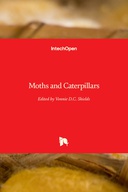Explore

Moths and Caterpillars
0 Ungluers have
Faved this Work
Login to Fave
This book provides contributions on various topics pertaining to moths and caterpillars written by experts in their respective fields. The first and third chapter examine pest management strategies for controlling the fall armyworm, Spodoptera frugiperda, and the codling moth, Cydia pomonella. Both insect pests are responsible for crop losses valued at millions of dollars annually. The authors discuss current management practices as well as their limitations. The second chapter focuses on the employment of RNAi technology as a molecular tool applied in controlling lepidopteran crop pests. The fourth chapter covers the importance of two types of proteins found in the cocoons of the Indian Tasar silkworm, Antheraea mylitta. The presence of these silk proteins is critical in allowing the pupae to endure and survive harsh environmental conditions and has served in the medical field in the manufacturing of suture materials, as well. The last chapter highlights the importance of how the sense of taste plays a key role in the feeding behavior of caterpillars. Attention is paid to the morphology of specific sensory organs involved in feeding with reference to gypsy moth caterpillars, Lymantria dispar. In addition, feeding behavior, phytochemicals, hostplant preferences, and neurophysiological responses of sensory organs involved in peripheral gustatory coding are covered. This book targets a wide audience of entomologists, biologists, ecologists, zoologists, teachers, and students.
This book is included in DOAB.
Why read this book? Have your say.
You must be logged in to comment.
